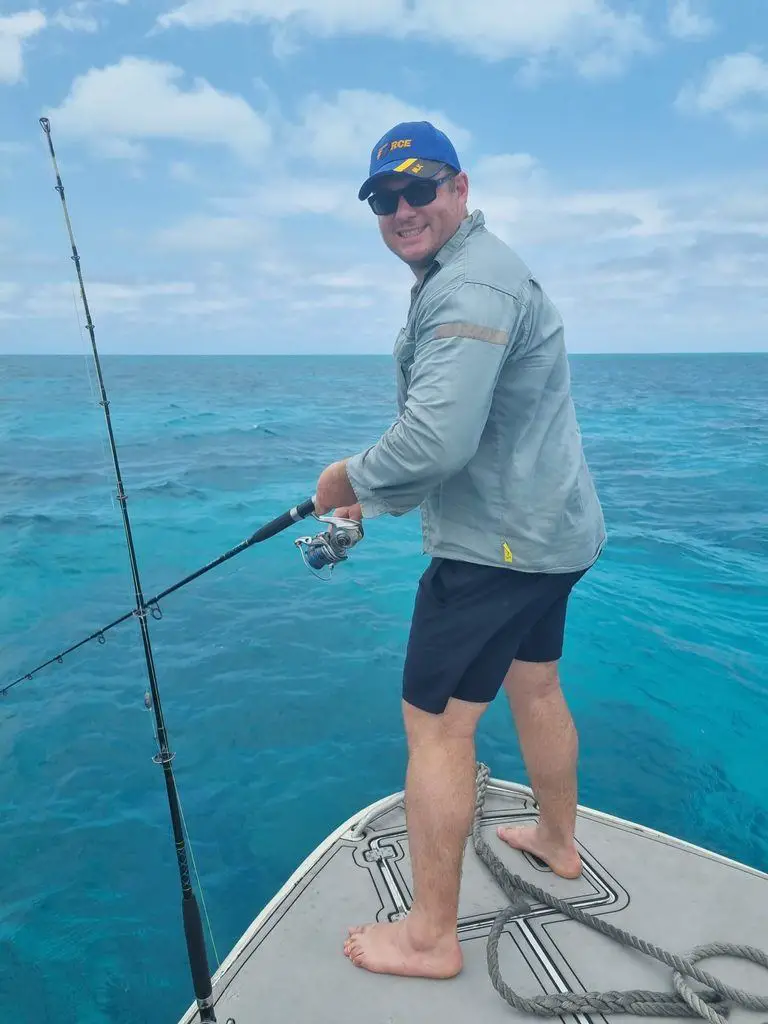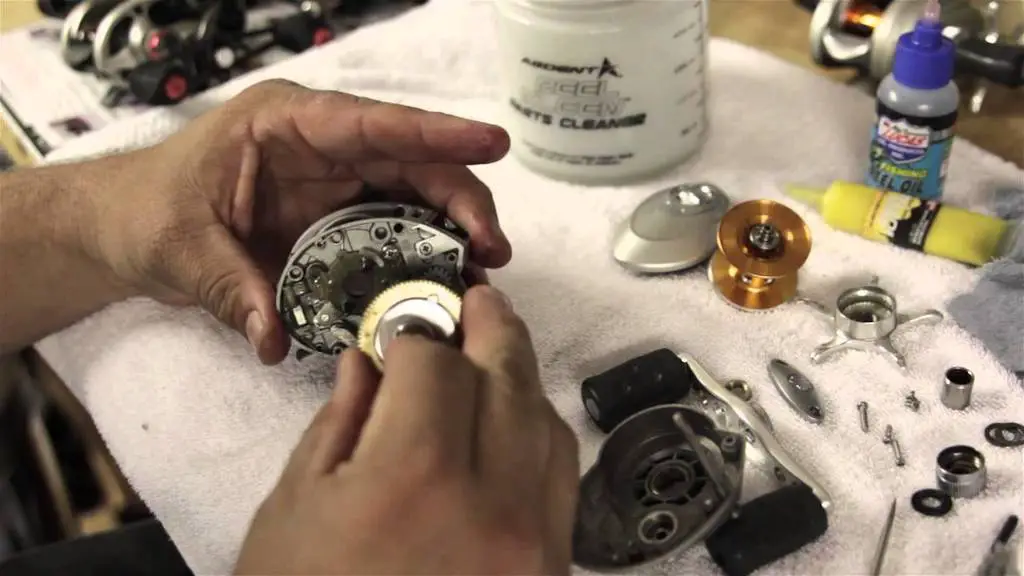To clean a fishing reel after saltwater use, rinse it with fresh water to flush away the salt and sand, then dry it with a cloth before allowing it to air dry. Finally, grease and oil it regularly.

Table of Contents
How to Clean a Reel After Saltwater Fishing
Fishing in saltwater is a thrilling experience. The tug on the line, the mystery of what might be at the end, the grandeur of the ocean – it’s an addiction for me. But one thing I’ve learned is that saltwater can be harsh on our gear, particularly on fishing reels.
To keep my reels in tip-top shape, I’ve perfected my cleaning routine. Follow along, and I’ll show you how to clean your fishing reel after saltwater use.
Tools Required
- Fresh Water: You’ll need plenty of fresh water to rinse off the saltwater and any residue from your fishing reel.
- Soft Toothbrush or Small Cleaning Brush: This is needed to gently scrub away salt, sand, and any other debris from the nooks and crannies of your reel.
- Soft Cloth: A soft, absorbent cloth is needed for drying your reel after rinsing.
- Fishing Reel Grease and Oil: These are needed for lubricating the various components of your reel after cleaning. Each serves a specific purpose – the oil is for the bearings while the grease is for gears and moving parts.
- Screwdriver or Reel Wrench: Depending on your reel’s design, you will need a screwdriver or a reel-specific wrench to open the housing for cleaning and lubrication.
Step 1 – Flush with Fresh Water
Rinsing your reel with fresh water is the first, and arguably, the most crucial step. Saltwater can corrode and damage your reel if left unchecked, so this step is key in keeping your reel working well for years.
I prefer to do a light rinse right after fishing, while I’m still at the beach. I carry a jug of fresh water in my truck for this very purpose. If your fishing reel has a drag system, ensure to loosen it before rinsing.
I then do a more thorough rinse once I get home, spraying water gently onto the reel, being careful not to force water into the drag system or the gear box of my spinning or baitcasting reel.
Step 2 – Remove Sand and Salt
After rinsing, it’s time to remove any leftover sand or salt from your reel. You’d be surprised how stubborn these can be, so I use a soft toothbrush for this task. I gently scrub the reel’s exterior, paying close attention to the guides, handle, and spool.
If I’ve been using an overhead or conventional reel, I remove the side plate to access the internal components, ensuring no sand or salt remains. When it comes to my saltwater spinning reel, I’m careful not to disassemble it, to avoid damaging its precision engineering.
Step 3 – Dry with a Cloth and Air Dry
Once I’ve rinsed and scrubbed, I thoroughly dry the reel with a soft cloth. I focus on the nooks and crannies where water may be hiding. Then, I let it air dry overnight, but I ensure it’s in a well-ventilated area, away from direct sunlight.
Step 4 – Grease and Oil Regularly
After the reel is completely dry, I lubricate it to keep it running smoothly. Different reels need different types of lubricants. I use reel grease for the gears and reel oil for the bearings on my baitcaster and spinning reels.
I usually remove the spool before applying lubricant. The right lubrication can not only make your reel work better but also prolong its life.
How Often to Clean a Saltwater Reel
You should clean your reel after each saltwater fishing trip to prevent rust and corrosion.
Remember, “an ounce of prevention is worth a pound of cure.” Keeping your reel clean is easier than fixing it after it’s broken.
You will likely need to open your reel up completely for a thorough clean every year or two,
After Each Use
- Quick Rinse: Rinse the reel with fresh water as soon as you’re done fishing. This quick rinse will help remove most of the salt, sand, and other debris that may have accumulated on your reel during your fishing trip.
At Home After Each Use
- Detailed Rinse: Rinse again more thoroughly with fresh water. This is important to ensure that you’ve removed all the salt from your reel, which can cause rust and other damage over time.
- Clean and Dry: Clean off any remaining debris with a soft brush and then dry the reel thoroughly. Make sure the reel is completely dry before storing it.
- Light Lubrication: Apply a light layer of lubricant to the moving parts of your reel after every few fishing trips, or when you feel that the reel isn’t operating as smoothly as it should.
Every 3-6 Months
- Deep Clean: This involves partially disassembling the reel and cleaning each part individually. The frequency of these deep cleans depends on how often you use your reel, but as a general rule, aim for every 3-6 months.
- Grease and Oil: Apply fishing reel grease and oil to the necessary parts. Bearings get oiled, and gears get greased. This keeps your reel operating smoothly and prolongs its lifespan.
Once a Year
- Professional Service: If possible, consider having your reel serviced by a professional. This is especially important for expensive or complex reels. They can fully disassemble, clean, lubricate, and inspect your reel for any potential issues.

What Happens When You Don’t Clean Your Saltwater Reel?
Failing to clean your reel after saltwater fishing can result in rust, corrosion, and general wear. It can get so bad that the reel becomes useless. I once neglected a reel after a particularly exhausting trip and it needed complete replacement. It was a tough lesson, but one I won’t forget.
It can also mean that you reel will slowly degrade over time. If you want your gear to last for years and decades into the future, then you have to be diligent about removing saltwater from your equipment.
How Long Do You Have to Clean a Reel After Use in Saltwater?
Try to clean your reel as soon as possible after fishing in saltwater. The longer the salt sits on the reel, the more potential for damage.
Ideally, give it a rinse right after fishing and a more detailed cleaning once you get home.
Cleaning your reel after each saltwater outing might seem tedious, but it’s a small price to pay to keep your equipment in top condition. After all, maintaining your gear is part of the fishing experience, and it means you’re always ready for that next big catch!
